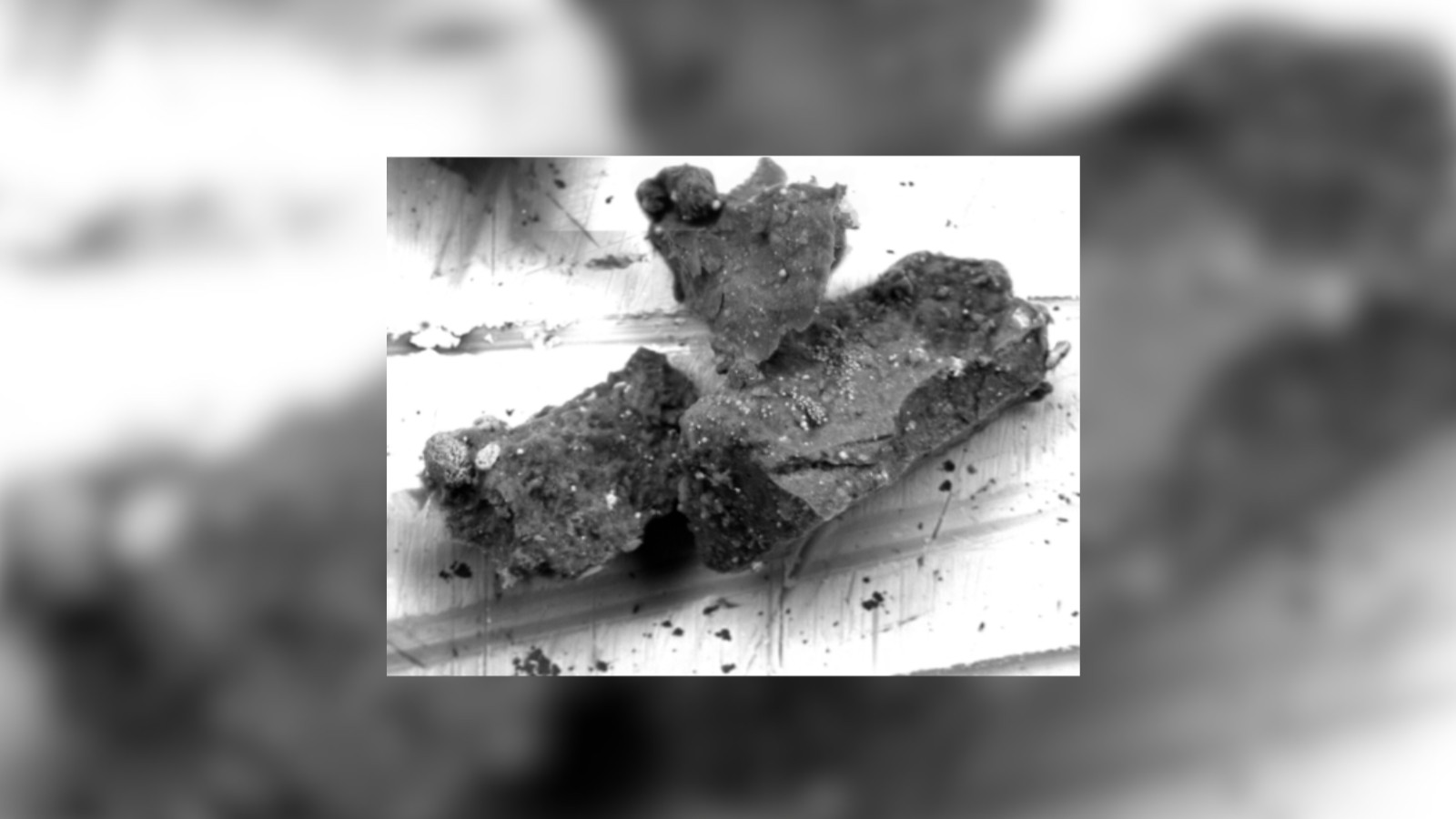Kablam! Watch NASA Crush a SLS Megarocket Fuel Tank Until It Explodes (Video)
The test was explosively successful.
If you've ever wondered what a giant rocket fuel tank looks like after exploding, a new NASA video has you covered.
In the video, which NASA released Monday (Dec. 9), engineers have purposefully exploded a test version of the Space Launch System (SLS) rocket's propellant tank. In doing so, they found that the tank can handle a lot more than they expect the real version to encounter in flight.
At NASA's Marshall Space Flight Center in Huntsville, Alabama, engineers pushed the test tank full of liquid hydrogen way past its limits. The tank aced the test, withstanding more than 260% of expected flight loads for over five hours, at which point engineers spotted a buckling point, which soon burst.
"We purposely took this tank to its extreme limits and broke it because pushing systems to the point of failure gives us additional data to help us build rockets intelligently," Neil Otte, chief engineer of the SLS Stages Office at Marshall, said in a NASA statement. "We will be flying the Space Launch System for decades to come, and breaking the propellant tank today will help us safely and efficiently evolve the SLS rocket as our desired missions evolve."
Video: Watch NASA's Megarocket Get Ready for New US Moon Missions
More: Space Launch System: NASA's Giant Rocket Explained (Infographic)
We're crushing it! Literally. Before launching @NASA_SLS🚀 on #Artemis missions, engineers at @NASA_Marshall & @BoeingSpace will push an exact copy of its hydrogen tank beyond its limits. It's a way to expand knowledge and evolve the system for the future. https://t.co/AKZOrSXW6w pic.twitter.com/46AVyub5JXDecember 5, 2019
Previously, the tank completed tests in which it withstood the extreme forces that it's expected to be exposed to with engine thrust. During these earlier tests, the tank showed no signs of cracking or breaking at all.

For all of these tank tests, both NASA and Boeing engineers simulated a liftoff with the flight stresses that come along with that. The test version of the SLS liquid hydrogen tank that is used for these tests is structurally identical to the actual flight tank. To recreate accurate flight stresses, the engineers use gaseous nitrogen and large hydraulic pistons to create intense compression, tension and pressure.
Breaking space news, the latest updates on rocket launches, skywatching events and more!
"This final tank test marks the largest-ever controlled test-to-failure of a NASA rocket stage pressurized tank," Mike Nichols, Marshall's lead test engineer for the tank, added in the statement. "This data will benefit all aerospace companies designing rocket tanks."
Today @NASA Administrator @JimBridenstine unveiled the assembled rocket core stage for @NASA_SLS that will help power the first #Artemis mission to the Moon. Check out images from the event at our Michoud Assembly Facility: https://t.co/EueszCiDU3 pic.twitter.com/sVGZautby2December 9, 2019
Not only did the tank prove that it could withstand some serious pressure – it performed in line with what was predicted by a Boeing analysis team. "The initial tank buckling failure occurred at the same relative location as predicted by the Boeing analysis team and initiated within 3% of the predicted failure load," Luke Denney, qualification test manager for Boeing's Test & Evaluation Group, said in the statement. "The accuracy of these predictions against real life testing validates our structural models and provides high confidence in the tank design."
This test was a major step forward in finalizing the SLS core stage for NASA's Artemis program. In fact, just a few days after this successful test, NASA Administrator Jim Bridenstine revealed the assembled rocket core stage for SLS at Artemis Day at Michoud Assembly Facility in New Orleans, Louisiana.
NASA plans for SLS to soon launch the Orion spacecraft to the moon or the proposed lunar Gateway with astronauts and supplies onboard.
- The World's Tallest Rockets: How They Stack Up
- NASA Test-Fires Megarocket Engine That May Take Astronauts to the Moon
- Could NASA Build the Famous Saturn V Today? It's Working on It
Follow Chelsea Gohd on Twitter @chelsea_gohd. Follow us on Twitter @Spacedotcom and on Facebook.

Join our Space Forums to keep talking space on the latest missions, night sky and more! And if you have a news tip, correction or comment, let us know at: community@space.com.

Chelsea “Foxanne” Gohd joined Space.com in 2018 and is now a Senior Writer, writing about everything from climate change to planetary science and human spaceflight in both articles and on-camera in videos. With a degree in Public Health and biological sciences, Chelsea has written and worked for institutions including the American Museum of Natural History, Scientific American, Discover Magazine Blog, Astronomy Magazine and Live Science. When not writing, editing or filming something space-y, Chelsea "Foxanne" Gohd is writing music and performing as Foxanne, even launching a song to space in 2021 with Inspiration4. You can follow her on Twitter @chelsea_gohd and @foxannemusic.
-
chemengr_wvu NASA didn't "Crush" anything. If anything, the tank was ripped apart under tensile force and internal nitrogen pressure. It was basically the worlds largest Instron machine, tearing the tank apart.Reply
